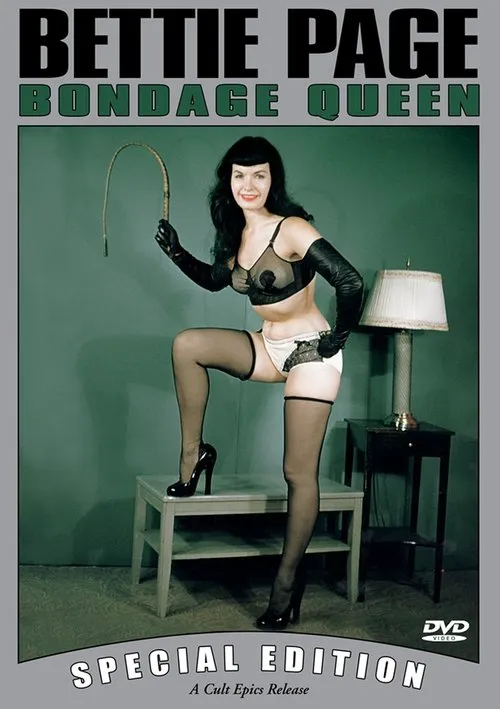Bettie Page: Bondage Queen

Plot
The life and career of Bettie Page, the quintessential pin-up model, have been subject to interpretation and revision over the years. While her glamorous and seductive persona remains an iconic symbol of the mid-20th century, a lesser-known aspect of her work has become increasingly significant to the development of the fetish and BDSM scene – her participation in bondage photographs and short films. This lesser-known chapter of Bettie Page's career began in the 1950s, when she started posing for photographer Irving Klaw. Klaw was an artist and entrepreneur who specialized in creating bondage-themed photographs, often featuring female models dressed in lingerie or other revealing outfits, while being bound or restrained. The resulting images were both sensual and playful, often blurring the lines between seduction and submission. As Bettie Page became one of Klaw's most sought-after models, her involvement in bondage photography gained attention and acclaim. The unique blend of eroticism and restraint in her photographs caught the attention of fans and collectors alike, paving the way for her to become an iconic figure in the history of fetish art. Throughout the 1950s, Bettie Page appeared in a series of bondage-themed short films produced by Irving Klaw and his sister Paula. These film shorts, which averaged around 10-15 minutes in length, featured Bettie Page engaging in various forms of bondage and restraint, including being tied up, suspended, and gagged. The films often concluded with her being freed from her bonds and striking a pose, emphasizing the playful and teasing aspects of the scene. While these short films and photographs may seem tame or even humorous by today's standards, they have become cult classics in the fetish and BDSM community. The images and films have been rediscovered and reevaluated, with many fans and collectors recognizing the significance of Bettie Page's role in shaping the development of the scene. One of the most striking aspects of Bettie Page's bondage work is its sense of joy and playfulness. Unlike the more somber and serious approaches often associated with the BDSM community today, Bettie Page's participation in bondage photographs and films appears to be largely free of any darker or more sinister undertones. Her playful and flirtatious demeanor, combined with the often whimsical and stylized nature of the bondage themes, has led many fans to interpret her work as a celebration of sensual pleasure and exploration, rather than a manifestation of any darker impulses. Furthermore, Bettie Page's involvement in bondage photography and film has also been interpreted as a way of subverting and challenging societal norms and expectations around female sexuality. By engaging in and portraying acts of bondage and submission, she was able to reclaim and assert control over her own body and desires, using the tropes of fetish and BDSM to express herself in a way that was both empowering and subversive. In many ways, the legacy of Bettie Page's bondage work continues to be felt and celebrated today. Her influence has been seen in countless artists, models, and performers across a range of media and disciplines, from fashion and photography to film and performance art. By pushing boundaries and exploring the limits of what was considered acceptable in the mid-20th century, Bettie Page helped to lay the groundwork for a more liberated and expressive understanding of human sexuality, one that continues to evolve and flourish in the present day. As a cultural icon, Bettie Page's enduring allure lies in the ability to capture and express the complexities of human emotion and desire. Her work in bondage photography and film serves as a poignant reminder of the power of creative expression to shape and subvert societal norms, paving the way for future generations to explore and celebrate the full range of human experience.
Reviews
Recommendations


